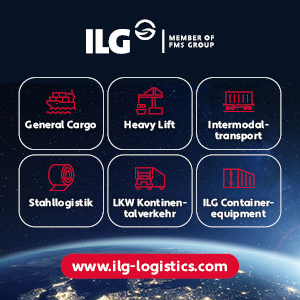China’s Belt-and-Road Initiative (BRI), the New Silk Road, involves billions in investment into infrastructure and other areas. China wants to create a new economic area from western China to Central Europe. The project raises great expectations, also in Europe, although the continent has so far been rather passive regarding this major infrastructure initiative in China.
In a new study, the Vienna Institute for International Economic Studies (wiiw) examines where and how a “European Silk Road” runs and what potential this can bring. Mario Holzner, senior study author and deputy director of the wiiw, concludes: “In our view, Europe’s restraint is incomprehensible. Particularly in the east of the continent, there are significant infrastructure gaps to fill and income gaps to be compensated. We therefore see tremendous potential for various areas in Europe.”
The economic calculations show that a “European Silk Road” connecting the densely populated but less developed East with the industrial centers of western Europe would provide more growth and employment in the short, medium and long term. Therefore, the Vienna Institute for International Economic Studies argues in its study for a “big push” in infrastructure investment in Europe and proposes the construction of a “European Silk Road”.
Eastern Europe is home to around 480 million people, almost the same number of inhabitants as in the EU (510 million inhabitants). However, they have only about half the income of the average income within the European Union. This results in enormous market potential: For example, the study “Europe’s Silk Road” identifies additional economic growth of 3.5 per cent on average over an investment period of 10 years. At the same time, a “European Silk Road” can lead to an increase in employment of 2 to 7 million jobs – under favorable circumstances and with continued low interest rates.
In addition to positive employment effects, such an expansion of the traffic routes brings significant time savings. Improved infrastructure and better connections to the Russian central area can save over 8 per cent of the transport time on the road, which means a reduction of travel time by around 2.5 hours. Mario Holzner: “Countries along a route that leads through northern Europe could increase their exports to Russia by more than 11 per cent. That would be additional exports of more than EUR 12.5 billion.”
Western Europe and especially Austria would benefit most from these infrastructure measures and could expand their markets in the eastern neighborhood. According to calculations of the wiiw, Austria’s exports to Russia would increase by more than 14 per cent, which corresponds to an increase of around EUR 330 million. By construction alone, 34,000 up to 121,000 new jobs could be created in Austria.
The costs for the full expansion of the infrastructure network are estimated by wiiw to be around EUR 1,000 billion or around 8 per cent of the gross domestic product of the countries along the two routes. That’s 7 per cent of the EU’s economic output. In addition to economic potential within Europe, a “European Silk Road” could also define the future access points to East Asia and thus also make sense of the “New Silk Road” of China.
Two possible main routes of a “European Silk Road” were identified by the wiiw, which connect the centers of Western European industry with the eastern neighborhood in the larger Europe and together cover a distance of 11,000 kilometers.
The northern route of a “European Silk Road” runs from Lisbon to Uralsk on the Russian-Kazakh border. The centerpiece is the route from the French industrial center of Lyon to the port of Duisburg, one of the most important logistics centers in the northwest, to Moscow. In the southwest, extensions of this route from Lyon to Barcelona to Madrid and Lisbon and in the east from Moscow via Nizhny Novgorod and Samara to the Russian-Kazakh border town of Uralsk.
The southern route of a “European Silk Road” has its starting point in the region around Milan, the largest Italian metropolitan area and economic center of the country. From there, its core route runs via Zurich and the industrially developed Southern Germany along the Danube valley via Vienna and Budapest to Bucharest and to the port of Constanza on the Black Sea. By sea, both the Russian port of Novorossiisk and on to Volgograd can be reached, but also the Georgian port of Poti and Tbilisi can be reached as far as Baku on the Caspian Sea.












